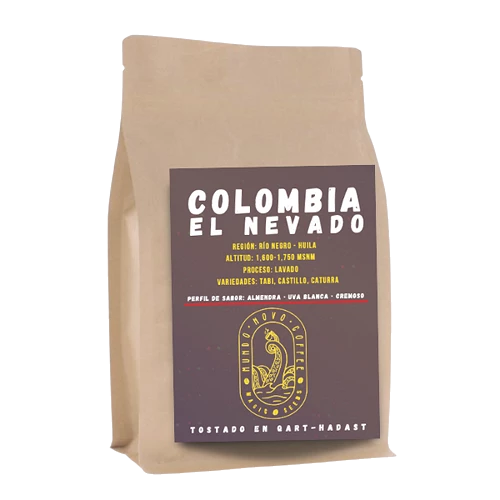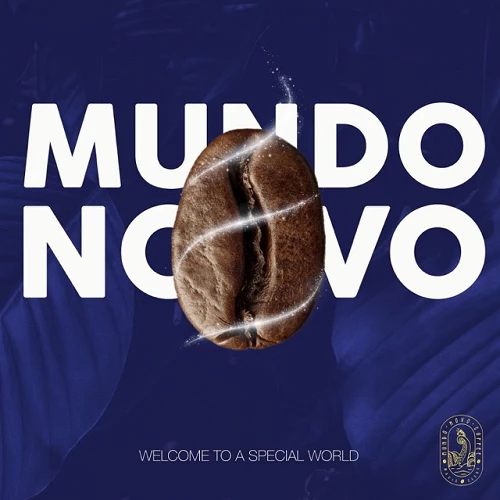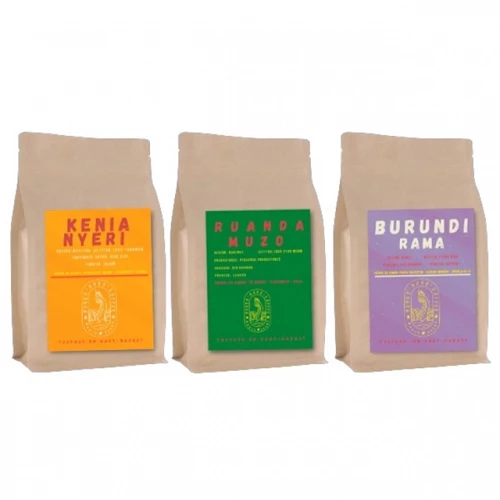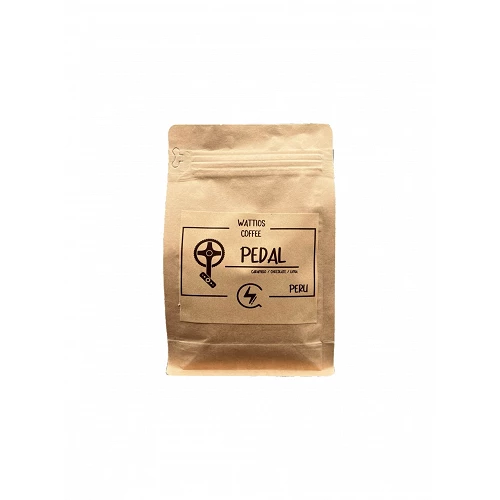Aromas del Valle - Peru
Specialty Coffee from PERU Aromas del Valle
An ideal coffee to prepare in an espresso or moka pot (a traditional stovetop coffee maker) either alone or with milk. Aftertaste of black tea, with a flavour of dehydrated pear and almond aroma. Medium acidity, but juicy and with good weight in the mouth.
Origin: Cajamarca - San Inazio, Peru
Altitude: 1.510 m
Variety: Catimor
Process: Washed
Producer: Coop. Agraria Aromas del Valle
Tasting notes: Almond, Dehydrated Pear, Black Tea
Specialty Coffee from PERU Aromas del Valle
ABOUT AROMAS DEL VALLE
They are an agricultural cooperative of 600 small coffee producers who are currently distributed in productive areas between 1,350 and 2,300 meters above sea level in the provinces of Jaén, San Ignacio and Cutervo. Their history began in 2015 as a small association of Aroma del Valle producers. The development of their activities is based on principles of democracy and loyalty, which contributes to the socio-economic development of producers who help generate a participatory social identity even within their own families. MISSION: Promote the development of high quality to meet the needs of a market with high standards through processes of insertion into the technification of coffee crops, thus providing economic, social and environmental support for our producers and families. VISION: To be the leading organization in the quality coffee market by 2026, contributing to the development of the living conditions of our associates and the environment.
This coffee comes from the provinces of La Copia and San José de Lourdes in San Ignacio, Cajamarca, the third largest coffee-growing region in northern Peru. The region is entirely formed by the Andes mountain range. The high altitudes, lush jungle and fertile clay soil create ideal conditions for coffee cultivation. The average temperature is 24 °C. These remote areas are home to many indigenous Inca people, whose main occupations are agriculture and coffee production.
As in the rest of the country, coffee here is grown by small farmers, on plantations of about 2-3 hectares. The coffee growers in San Ignacio use sustainable and ecological cultivation methods and experiment with different processing methods. Coffee production is a central economic activity in the region, involving families and entire communities in cooperation and knowledge exchange. In addition to coffee, local farmers grow cassava, corn and sugar cane.
History of Coffee in Peru
Peru holds exceptional promise as a producer of high quality coffees. The country is the world's largest exporter of organic Arabica coffee. With extremely high altitudes and fertile soils, the country's small farmers also produce some impressive specialty coffees.
Although coffee arrived in Peru in the 18th century, very little was exported until the late 19th century. Until then, most of the coffee produced in Peru was consumed locally. When, at the end of the 19th century, coffee rust affected Indonesia, a key country for European imports, Europeans began to look elsewhere for their fix. Peru was a perfect option.
Between the end of the 19th century and the First World War, European interests invested significant resources in coffee production in Peru. However, with the advent of the two world wars, England and other European powers weakened and adopted a less colonialist perspective. When the British and other European landowners left, their lands were purchased by the government and redistributed to the local population. The Peruvian government repurchased the 2 million hectares previously granted to England and distributed the land to thousands of local farmers. Many of these farmers subsequently grew coffee on the land they received.
Today, Peruvian coffee farmers are overwhelmingly small-scale. Peruvian farmers typically process coffee on their own farms. Most of the coffee is thoroughly washed. It is usually pulped, fermented and sun-dried in raised beds or drying sheds. Drying greenhouses and parabolic beds are becoming more common as farmers move towards niche markets.
After drying, the coffee is sold in parchment to the cooperative. Producers who are not members of a cooperative usually sell to a middleman.
The remoteness of the farms, coupled with their small size, means that producers need intermediaries or cooperatives to help them get their coffee to market. Cooperative membership greatly protects the farmers on the farm and can make a huge difference in coffee income.
Data sheet
- Country of Origin
- Peru
- Roasted for
- Filter & Espresso
- Tasting notes
- Almond
Black tea
Pear - Processing
- Lavado
- Variety
- Catimor













